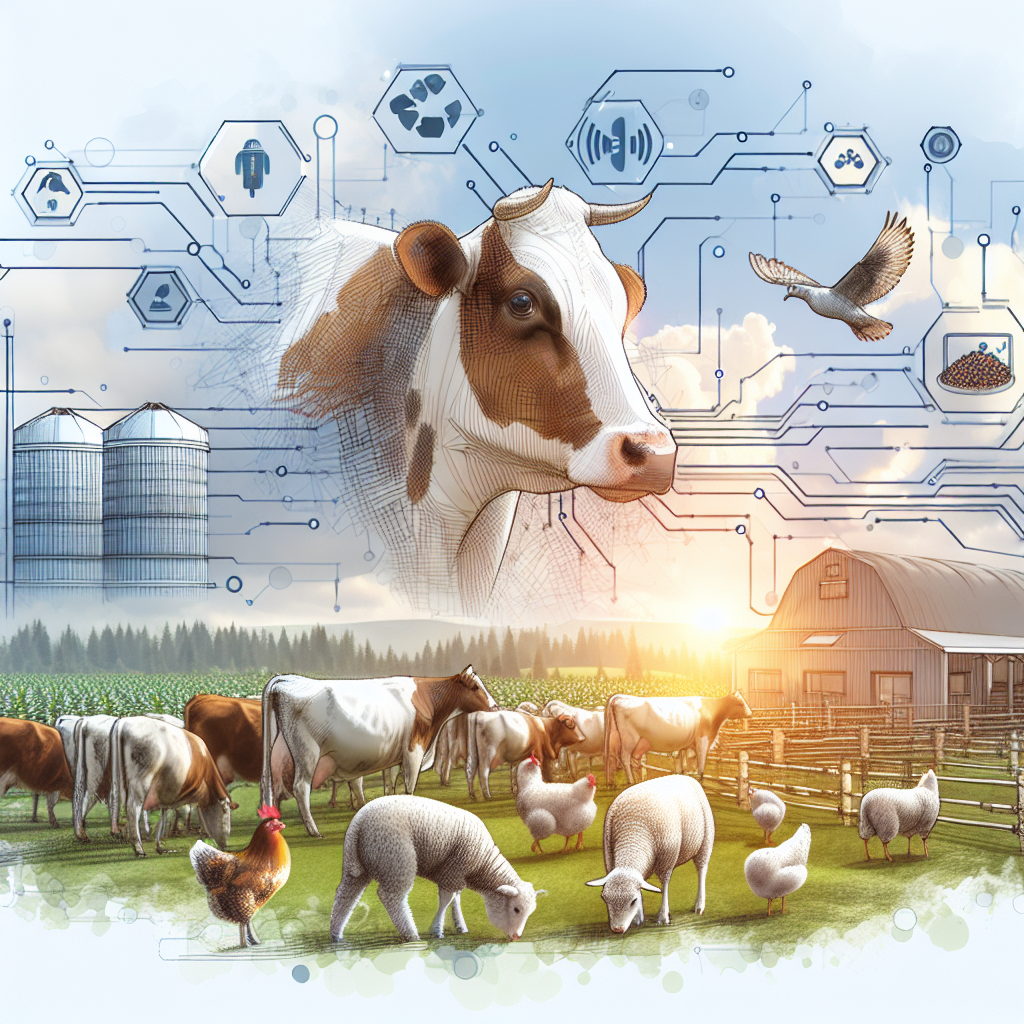Artificial intelligence (AI) is revolutionizing many industries, and agriculture is no exception. One area where AI is making a significant impact is in improving livestock welfare. Livestock farming is a crucial part of the global food system, providing meat, dairy, and other products to billions of people. However, traditional farming practices can often lead to issues such as animal stress, illness, and suboptimal living conditions. AI technology is being used to address these challenges and improve the overall well-being of farm animals.
One of the key ways in which AI is improving livestock welfare is through the use of sensors and monitoring technology. These devices can be placed on animals to track various metrics such as activity levels, temperature, and feeding habits. By collecting this data in real-time, farmers can quickly identify any issues or changes in behavior that may indicate a health problem or other concern. This early detection can help prevent illnesses and ensure that animals receive prompt medical attention when needed.
AI-powered monitoring systems can also track environmental conditions in livestock facilities, such as temperature, humidity, and air quality. By optimizing these factors, farmers can create a more comfortable and healthy living environment for their animals. For example, AI can help regulate heating and ventilation systems to ensure that the temperature remains within a comfortable range for the animals. This can help prevent stress and illness, leading to better overall welfare.
Another way in which AI is improving livestock welfare is through the use of predictive analytics. By analyzing large amounts of data collected from sensors and other sources, AI algorithms can identify patterns and trends that may indicate potential issues with animal health or well-being. For example, AI can predict when an individual animal is likely to give birth based on changes in its behavior and physiology. This information can help farmers prepare for the birth and ensure that the animal receives the necessary care and attention.
AI can also be used to optimize feeding schedules and diets for livestock. By analyzing data on individual animals’ nutritional needs and preferences, AI algorithms can create personalized feeding plans that ensure each animal receives the right balance of nutrients. This can help improve animal health and growth rates, while also reducing waste and costs for the farmer.
In addition to monitoring and analytics, AI is also being used to automate certain tasks on the farm, such as sorting and handling animals. For example, AI-powered robotic systems can identify and separate sick or injured animals from the rest of the herd, allowing farmers to provide them with the appropriate care. This can help reduce stress and improve the overall well-being of the animals, while also saving time and labor for the farmer.
Overall, AI is transforming the way livestock farming is done, leading to improvements in animal welfare, productivity, and sustainability. By harnessing the power of AI technology, farmers can ensure that their animals are healthy, happy, and well-cared for, while also benefiting from increased efficiency and profitability.
FAQs:
Q: How does AI technology improve animal welfare in livestock farming?
A: AI technology can improve animal welfare in livestock farming by monitoring animal behavior and health in real-time, optimizing environmental conditions, predicting health issues, and automating certain tasks on the farm.
Q: What are some examples of AI-powered monitoring systems used in livestock farming?
A: Examples of AI-powered monitoring systems used in livestock farming include sensors that track animal activity, temperature, and feeding habits, as well as systems that monitor environmental conditions such as temperature, humidity, and air quality.
Q: How can AI algorithms help optimize feeding schedules and diets for livestock?
A: AI algorithms can analyze data on individual animals’ nutritional needs and preferences to create personalized feeding plans that ensure each animal receives the right balance of nutrients. This can help improve animal health and growth rates, while also reducing waste and costs for the farmer.
Q: What are some benefits of using AI technology in livestock farming?
A: Some benefits of using AI technology in livestock farming include improved animal welfare, increased productivity and efficiency, reduced labor costs, and better overall sustainability of the farm.
Q: Are there any challenges or drawbacks to using AI technology in livestock farming?
A: Some challenges to using AI technology in livestock farming include the initial cost of implementing the technology, the need for training and expertise to use the technology effectively, and concerns about data privacy and security. However, the benefits of using AI technology often outweigh these challenges for many farmers.

